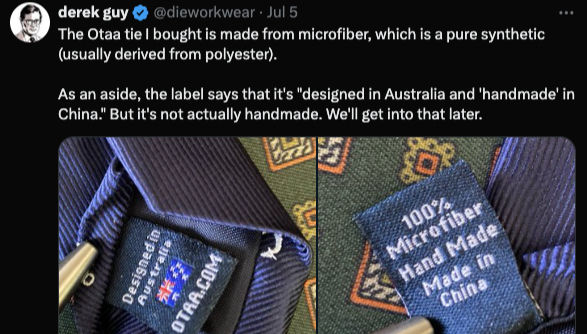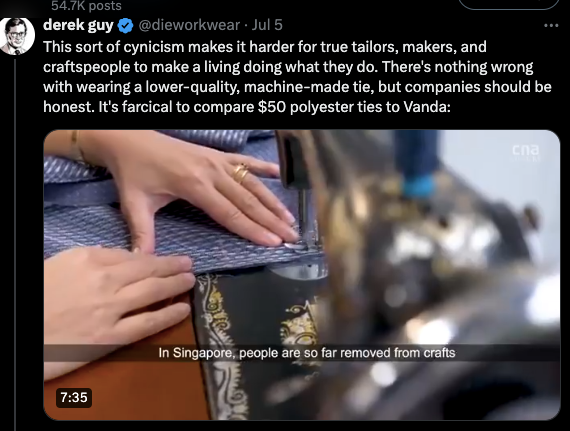Advertising has enough of a bad name for embellishing, inflating, and downright misrepresenting claims for a product or brand. There has to be some wiggle room in the language of description and if your brand lacks confidence and the owner doesn’t believe in their product enough to shout it from the rooftops, why would anyone want to spend their hard-earned money on it? Snake oil didn’t get a bad name for no reason though and from the beginning of town criers and print advertising marketers have been selling sawdust instead of flour, if they can get away with it.
Eventually, for public safety, lines had to be drawn in the sand and false advertising laws and accountability were created. With regional print and TV advertising, it was easier to hold advertisers and brands accountable for their claims. With international sales and digital marketing, it becomes more difficult to hold those in other jurisdictions accountable for unsubstantiated claims and it returns to the community to protect consumers. Puffery marketing has become the norm online with ‘opinion pieces’ dominating and ‘entertainment’ in place of real news while cries against the ‘mainstream media’ that decimate the established fact-checkers leaving the reader to the mercy of community notes.
This landscape may be the reason Otaa, the online necktie brand, felt they could lean into their Puffery claims of being “The best tie in the world” and ‘joking around’ claims of being made of organic material and the tongue-in-cheek tagline of “We are luxury” while holding sheep to unserious music showing they are, clearly, not luxury. But where does the ‘it was just a joke!’ mentality stop in this advertising? When Otaa says they are “good value” and “We’re not a bloody rip.” or “We take real care of you.” is that also part of the joke as well? This advertising relies on knowledge of Australian humour to decipher which claims are true and which are just jokes or opinions. If you wish to reach a larger audience regional humour may not play so well on an international market, especially in fashion and menswear.

Fashion can be subjective but the one thing Otaa doesn’t pretend to be is a trendsetter in fashion looks, just fashion purchasing. Unlike their American goofy counterparts ‘Dollar Shave Club’ Who came out with a similar casual vibe, the industry that Otaa is looking to disrupt is one of the artisanal tailors rather than the first of the subscription models that Gillette created when they invented the disposable razor.
Not every industry deserves to be disrupted for convenience and ‘convenient luxury’ is an unfortunate oxymoron perpetrated by Shein and Temu. Thankfully menswear comes with its own community and the community notes for the Otaa breakdown the hope for the product and the eventual disappointment with the result as well as the advertising message.

There is a difference between gatekeeping and keeping up standards and Derek Guy @dieworkwear helps educate the layperson in the intricacies of menswear styling and culture while assessing the construction of an outfit with a matter-of-fact manner that Otaa would have done well to adopt.
Derek Guy pulls up with his weapon of choice, education. He breaks down each element of his freshly purchased Otaa brand tie and we, as viewers, see the company that jokingly attempts to be ‘one of the blokes’ slowly be unraveled like the microfiber of the tie they are attempting to pass off as high-end. Through this breakdown of Otaa’s product, we are blessed with the knowledge of how a true luxury tie should look through comparison. Perhaps if Otaa’s messaging had not been so contemptuous of luxury brands and degrading the genuine craftsmanship of the artisan while providing an inferior product, their message would have been much easier to swallow. Unfortunately, the uneducated fashionista, who is Otaa’s main target market, is being sold the idea of luxury without any education. This messaging will result in the degradation of the valuable craftsmanship of truly handcrafted items, and ultimately it will be the artisans who suffer rather than the large brands Otaa purports to subvert. Through their messaging, Otaa brings marketing and advertising down as well, with joking deminer and loose interpretation of facts Otaa leaves it up to the consumer to decipher which statements are true and which were “Just jokes!” with their goofy facade of plausible deniability. Derek Guy adds value to his message with education and this is truly speaking to the ‘common man’. Accessibility in fashion is not through condescending low-brow humour but through making a connection with your customers in the rich culture of fashion and clothing construction.
Otaa’s disdainful attitude toward luxury, in blatant attempts to connect with the ‘common man’ while at the same time attempting to sell them the luxury they look down upon manages to come off as alienating to both sectors.

As the landscape of clothing manufacturers and digital marketing continues to fluctuate and change the consumer will continue to rely on community notes to understand the true value of a purchase. An artisan should be paid their true value for the work they create, and just because one can do it more quickly through machine sewing or using AI it doesn’t make the result better quality. In the end, this is as true for tailoring as it is for advertising.


Comments